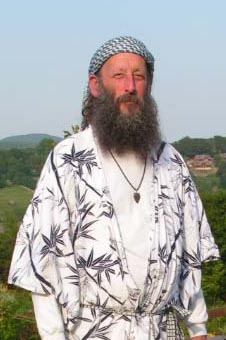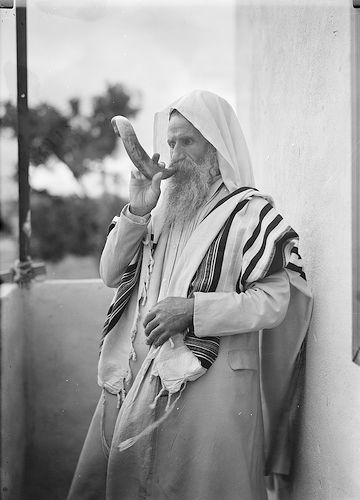

~^~^~^~^~^~^~^~^~^~^~^~^~^~^~^~^~^~^~^~^~^~^~^~^~^~^~^~^~^~^~^~^~^~^~
I AM SALEMHI, on the left. I am l00% ARAB --And I AM SCHLOMO
on the right, JEWISH 100%
WHAT IS THE DIFFERENCE between us? Well, a lot. 5,000 years ago we
both lived in the hills inland of what is today Beirut, among the Cedars
of Lebanon. The man on the left stopped eating PORK around then. The guy
on the RIGHT stopped eating PORK, too. Maybe the word about those trichoma
worms just traveled in the air between our tents. Neither of us wanted
worms in the brain. We both lived in Tents and were nomadic, stayed well
away from the guys on the ocean, the Phoenicians who threw their own first
born babes in the oven to salute the God Baal and traveled around the Med
in boats trading, greedy as all get out. We stayed inland and tended sheep.
The Arab on the left veiled his dozen wives. The guy on the right only
got four wives and they were wigged. Not in Lebanon but later in Europe
the Jew's wives were shaved bald then WIGGED. Both systems cut down on
mashers. Neither of us wanted to raise the sons of mashers. The guy
on the left had the KORAN- - -the guy on the right swore by the TORAH.
(found online) NEW BOOK, "THE INVENTION OF THE JEW" BY Dr. SCHLOMO SAND. Despite the fragmented and incomplete historical record, experts pretty much agree that some popular beliefs about Jewish history simply don'thold up: there was no sudden expulsion of all Jews from Jerusalem inA.D. 70, for instance. (NOte; It was rubble. When Invaders came in toa town in those days they flattened it.) Modern Jews owe their ancestry asmuch to converts from the first millennium and early Middle Ages as tothe Jews of antiquity.( Converts might mean guys who wanted our pretty Jewishdaughters. It might mean Arabs even who decided to join a tribe with more sheep.)ther theories, like the notion that many of today's Palestinians canlegitimately claim to be descended from the ancient Jews, are familiarand serious subjects of study, even if no definitive answer yet exists.But while these ideas are commonplace among historians, they stillmanage to provoke controversy each time they surface in public, beyondthe scholarly world. The latest example is the book "The Invention ofthe Jewish People," which spent months on the best-seller list in Israeland is now available in English. Mixing respected scholarship withdubious theories, the author, Shlomo Sand, a professor at Tel AvivUniversity, frames the narrative as a startling exposure of suppressedhistorical facts. The translated version of his polemic has sparked anew wave of coverage in Britain and has provoked spirited debates onlineand in seminar rooms.
Professor Sand, a scholar
of modern France, not Jewish history, candidly
states his aim is to undercut the Jews' claims to the land of Israel
by
demonstrating that they do not constitute "a people," with a shared
racial or biological past. The book has been extravagantly denounced
and
praised, often on the basis of whether or not the reader agrees with
his
politics.
The vehement response to
these familiar arguments - both the reasonable
and the outrageous - highlights the challenge of disentangling
historical fact from the sticky web of religious and political myth
and
memory.
Consider, for instance, Professor
Sand's assertion that Palestinian Arab
villagers are descended from the original Jewish farmers. Nearly a
century ago, early Zionists and Arab nationalists touted the blood
relationship as the basis of a potential alliance in their respective
struggles for independence. Israel's first prime minister, David
Ben-Gurion, and Yitzhak Ben Zvi, Israel's longest-serving president,
made this very argument in a book they wrote together in 1918. The
next
year, Emir Feisal, who organized the Arab revolt against the Ottoman
empire and tried to create a united Arab nation, signed a cooperation
agreement with the Zionist leader Chaim Weizmann that declared the
two
were "mindful of the racial kinship and ancient bonds existing between
the Arabs and the Jewish people."
Both sides later dropped
the subject when they realized it was not
furthering their political goals.
(Though no final consensus
has emerged on the ancestral link between
Palestinians and Jews, Harry Ostrer, director of the Human Genetics
Program at New York University Langone Medical Center, who has been
studying the genetic organization of Jews, said, "The assumption of
lineal descent seems reasonable.")
Books challenging biblical
and conventional history continually pop up,
but what distinguishes the dispute over origins from debates about,
say,
the reality of the exodus from Egypt or the historical Jesus, is that
it
is so enmeshed in geopolitics. The Israeli Declaration of Independence
states: "After being forcibly exiled from their Land, the People kept
faith with it throughout their Dispersion and never ceased to pray
and
hope for their return to it." The idea of unjust exile and rightful
return undergirds both the Jews' and the Palestinians' conviction that
each is entitled to the land.
Since Professor Sand's mission
is to discredit Jews' historical claims
to the territory, he is keen to show that their ancestry lines do not
lead back to ancient Palestine. He resurrects a theory first raised
by
19th-century historians, that the Jews of Central and Eastern Europe,
to
whom 90 percent of American Jews trace their roots, are descended from
the Khazars, a Turkic people who apparently converted to Judaism and
created an empire in the Caucasus in the eighth century. This idea
has
long intrigued writers and historians. In 1976, Arthur Koestler wrote
"The Thirteenth Tribe" in the hopes it would combat anti-Semitism;
if
contemporary Jews were descended from the Khazars, he argued, they
could
not be held responsible for Jesus' Crucifixion.
By now, experts who specialize
in the subject have repeatedly rejected
the theory, concluding that the shards of evidence are inconclusive
or
misleading, said Michael Terry, the chief librarian of the Jewish
division of the New York Public Library. Dr. Ostrer said the genetics
also did not support the Khazar theory.
That does not negate that
conversion played a critical role in Jewish
history - a proposition that many find surprising given that today's
Jews tend to discourage conversion and make it a difficult process.
Lawrence H. Schiffman, chairman of the Skirball department of Hebrew
and
Judaic Studies at New York University, said most historians agree that
over a period of centuries, Middle Eastern Jews - merchants, slaves
and
captives, religious and economic refugees - spread around the world.
Many intermarried with people from local populations, who then
converted.
There is also evidence that
in antiquity and the first millennium
Judaism was a proselytizing religion that even used force on occasion.
From the genetic research so far, Dr. Ostrer said, "It's pretty clear
that most Jewish groups have Semitic ancestry, that they originated
in
the Middle East, and that they're more closely related to each other
than to non-Jewish groups." But he added that it was also clear that
many Jews are of mixed descent.
"The ancient admixed ancestry
explains the blond hair and blue eyes of
Ashkenazi Jews whose grandparents and great-grandparents all lived
in
shtetls two and three generations ago," Dr. Ostrer said. They brought
the genes for coloration with them to Eastern Europe. These genes were
probably not contributed by their Cossack neighbors."
What accounts for the grasp
that some misconceptions maintain on popular
consciousness, or the inability of historical truths to gain acceptance?
Sometimes myths persist despite clear contradictory evidence because
people feel the story embodies a deeper truth than the facts. Marie
Antoinette never said "Let them eat cake," but the fictional statement
captured the sense of a regime that showed disdain for the public's
welfare.
A mingling of myth, memory,
truth and aspiration similarly envelopes
Jewish history, which is, to begin with, based on scarce and confusing
archaeological and archival records.
Experts dismiss the popular
notion that the Jews were expelled from
Palestine in one fell swoop in A.D. 70. Yet while the destruction of
Jerusalem and Second Temple by the Romans did not create the Diaspora,
it caused a momentous change in the Jews' sense of themselves and their
position in the world. For later generations it encapsulates the
essential truth about the Jews being an exiled and persecuted people
for
much of their history.
Professor Sand accuses Zionist
historians from the 19th century onward -
the very same scholars on whose work he bases his case - of hiding
the
truth and creating a myth of shared roots to strengthen their
nationalist agenda. He explains that he has uncovered no new
information, but has "organized the knowledge differently." In other
words, he is doing precisely what he accuses the Zionists of - shaping
the material to fit a narrative.
In that sense, Professor
Sand is operating within a long established
tradition. As "The Illustrated History of the Jewish People," edited
by
Nicholas Lange (Harcourt, 1997), notes, "Every generation of Jewish
historians has faced the same task: to retell and adapt the story to
meet the needs of its own situation." The same could be said of all
nations and religions.
Perhaps that is why - on
both sides of the argument - some myths
stubbornly persist no matter how often they are debunked while other
indubitable facts continually fail to gain traction.
<====
BACK
TO
the MUSLIM INDEX PAGE